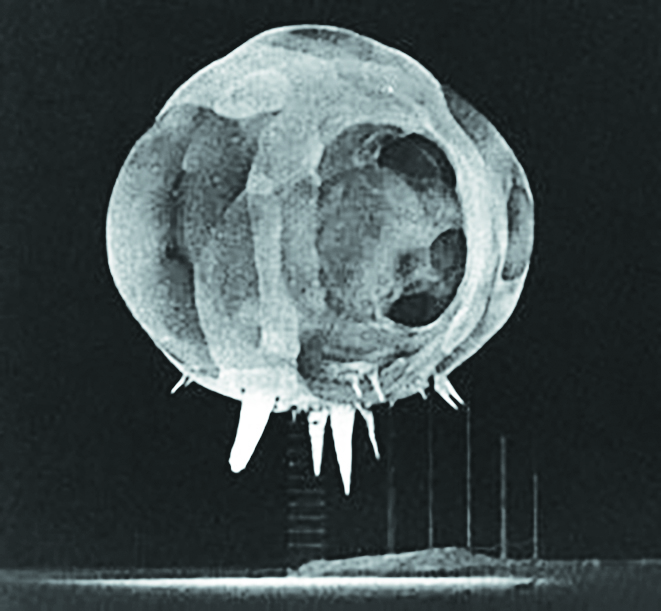The Atomic Marine
Toby Madrid when he went into the Marines.
“They put us out in the middle of nowhere.” Sheriff Toby Madrid had his hands wrapped around a cup of black coffee, his feet up on the desk. The casual laid back attitude belied the tension in his jaw. He also wasn’t looking at JR or me as he spoke, but at the wall. It was almost that if he looked at us, he’d never finish talking about what he had to say.
“They told us we were there to be part of an atomic bomb test.”
The test the Sheriff was talking about was part of what we know today as the Desert Rock Exercises. My research seems to single him out for what was called Desert Rock IV, or a series of tests called Operation Tumbler-Snapper.
From 1951 to 1957, at the Nevada Proving Grounds, a small camp called Camp Desert Rock was built. Its job was to provide for billets and a staging area as the U.S. Military conducted a variety of tests using military personnel and the bomb. The idea was to gauge the effectiveness of combat troops where a nuclear weapon had been used to soften up enemy positions.
“We were out at the camp for a few days before the actual test. They had us go out and dig trenches. In some cases, sandbagged defensive positions were built. The positions were deep enough for us squat or stand in.

An example of the Dog bomb, the Mark 7 nuclear bomb. – USAF Museum.
“I remember as we were digging, trucks were going by carrying tanks or jeeps. Some vehicles were towing artillery pieces out there. Some of our guys went out with them and came back saying that dummies in uniforms had been included, some standing, some lying down.”
From my research, the Sheriff, who was a Marine at the time, was part of Shot DOG nuclear test, and the test was conducted on May 1, 1952. The weapon was most likely a Mark 7 bomb.
The aircraft used in the drops were the Boeing B-50and the North American B-45. I don’t know and wasn’t able to find which did the drop here. I looked at the video of the drop, but couldn’t tell.
“Our trenches were about 4 miles from the blast,” the Sheriff said. “The day of the test, we got up, had breakfast, then they trucked us out to the site. We got into our trenches and were instructed to crouch below the rim of the trench, our faces down, and eyes closed when the blast happened. They’d let us know beforehand, and we’d see and hear the bomber coming in.
“About 8:30 or so, we heard aircraft high up, and then came the warning of the drop. We climbed into the trench and crouched down like they instructed us. I had my head down and eyes closed.
“Suddenly, there was light. Even with eyes closed and head down, I saw it.”
A-bomb explosion. Not the Dog bomb, (this one isn’t a dropped bomb, but a tower test) but part of the same series of exercises. What’s hanging down from the blast is referred to as a Rope Trick.
What the Sheriff had witnessed was the detonation of a 19 kiloton bomb. It exploded about a thousand meters above the ground.
“The light faded, but as it faded, I heard painful thunder. Then a sudden wind came up. Dirt and sand blew over and into the trench, the wind rocking me back against the wall of the trench. Then the wind rushed back from the other direction, shoving me into the front of the trench.
“Seconds later, when the order to leave our trenches came, we climbed out. Movies can’t describe the mushroom a bomb generates. It cascaded up into the sky, an angry white and black cloud boiling up like something from hell. There’s no way you can imagine it. Even if you see it, you can’t believe it’s real.
“They told us to start walking forward, so we did. Along the way we passed some of the things set up the day before. At one location I remember seeing a Sherman tank.
“The blast had knocked it over as if a giant had swatted it. Here and there were some of the dummies.
Some had burnt up almost entirely, others were smoldering. We got to about three quarters of a mile from where the bomb had exploded. They stopped and turned us around. I remember hearing someone say, ‘It’s too hot to go further.’ I learned later that they meant it was too radioactive.
“They marched us out of there to a place where we were swept and hosed off. I was surprised at the dust that came off me and the rest of my platoon. I threw that uniform away.
“We were kept out there for a few days, and people came around asking how we felt. I felt fine and said so. A few days later, they sent buses out and they took us back to base.”
A high number of military personnel who participated in the Desert Rock tests developed cancers and other symptoms associated with exposure to fallout and radiation. Many ended up dying.
The Sheriff passed away in 2014, and it didn’t seem what he passed away from was related to the bomb.
All things considered he may have been one of the lucky ones.
William R. Ablan is the pen name for Richard Muniz.




